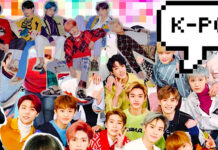We have asked several foreign ministries to answer some questions about their #DigitalDiplomacy. Here’s a guest post from the Foreign Ministry of Brazil.
 Which is/are your preferred social media channel(s) and why?
Which is/are your preferred social media channel(s) and why?
In recent years, Brazil´s Ministry of Foreign Affairs has been diversifying its online presence both through the launching of new profiles on social media platforms and through the establishment of channels in different languages. Our team in Brazil is hard at work to maintain accounts on Twitter in Portuguese, English and Spanish – the latter two were launched only a couple of years ago – and those Twitter channels are the current focus of our digital diplomacy efforts.
Working with a small team in Brasilia that also hold other responsibilities (and supported by other members of the Ministry´s Press Office), we reasoned that our resources would be better spent on Twitter due to its main focus on delivering simple and strong messages to a wide audience, especially considering the possibilities to interact with other leaders, governments and institutions to expand our public.
The Ministry of Foreign Affairs is also very active on YouTube, Flickr, Instagram, SoundCloud and our blog, and we are currently exploring other tools like Storify. But if Twitter is the focus of our attention when it comes to the profiles managed by our team in Brasilia, Facebook is the clear winner when it comes to enhancing the digital activities of our Embassies and Consulates abroad. Besides managing the main online profiles of the Ministry, our team is also responsible for coordinating a wide range of initiatives spanning the online presence of Brazil´s 226 missions abroad. Although the essence and scope of the digital activity carried out by each embassy, consulate and permanent delegation differs a lot from one another – mostly due to resources available and to the nature of its work – over 120 Brazilian missions maintain a Facebook page. For many of them, Facebook has become one of the main tools used to connect with local audiences and Brazilian communities abroad.
Please share an example of your best campaign/engagement on social media.
Brazil has recently taken the center stage by hosting the World Cup in 2014 and the upcoming Olympic Games in 2016. Between those two global events, the country also had to take robust action on several fronts in order to reduce the infestation rate of the Aedes aegypti mosquito, the main vector of the Zika virus. Transparency was key: Brazil promptly notified the relevant international bodies with updates on Zika virus transmission and was always fair and open in regards to our public health concerns. This stance allowed the Ministry of Foreign Affairs to act swiftly on social media worldwide so as to inform and dispel myths and misconceptions related to the problem. This was an interesting opportunity, and 2016 is a moment when our missions became more active on social media and we believe our digital diplomacy has delivered a lot of important messages.
There is also a larger story behind those initiatives: the launch, in 2015, of our “Best Practices for Social Media Handbook”, a document that for the first time established social media guidelines and minimum standards for this vast network of Brazilian missions abroad. This implemented a set of directives that allowed us to build more organized campaigns when opportunities or crises came up.
How do you measure success on social media?
When the Ministry of Foreign Affairs of Brazil first launched its social media profiles back in 2009, the main goal was to make the country´s ordinary citizen more aware of the activities carried out inside the Itamaraty Palace. As residents of a country that has 10 neighbors but has not fought a war with any of them in almost 150 years, many Brazilians are not used to seeing world affairs as particularly vital to their interests. International politics and the work of embassies, consulates and permanent delegations are often deemed unreachable or obscure. The solution was to make public the day-to-day work that went on inside the Ministry´s offices, and during much time the success of the social media team could be measured by the increasing number of Brazilians that got interested in foreign affairs. Although this work remains very important to us, we now focus on how our digital diplomacy efforts can influence public opinion in other countries and the public attitudes towards Brazil.
Joseph Nye once said that “Brazil naturally exercises soft power” and that “if you look at Brazilian culture and its impact, you see that the country’s image is originally positive […] the fact is that there is a perception that Brazil coped well with important issues to other countries, such as racial issues. That is, the country upholds values like tolerance. And that’s important”. We agree with Professor Nye on this and believe that spreading knowledge on Brazilian values and worldview is the key to success in connecting with a global audience.
We don’t think we can rely on simple metrics when it comes to social media. Rather than crunching numbers, we try to look more into how well our messages are being received and how fluent is our interaction with our followers – whether through comments, private messages, questions or requests.
Brazil has made a lot of progress on the use of technology in public communication, but it would be wrong to imagine that we have solved the problem of how to best use and measure our success with these tools. There is still much to do and learn. We are currently encouraging our embassies, consulates and permanent delegations to innovate and search for their own ways to serve their public, but also trying to ensure that our core messages are present in every initiative.
By the Digital Media Team at the Ministry of Foreign Affairs of Brazil (@Itamaraty_EN)













